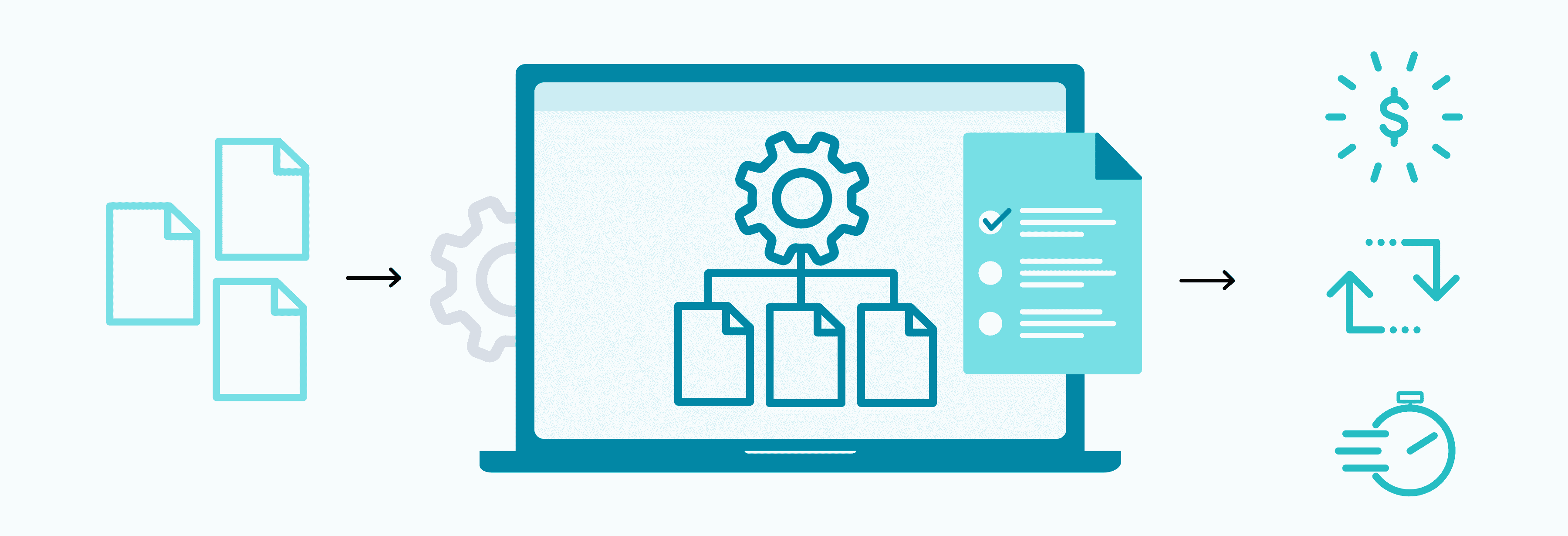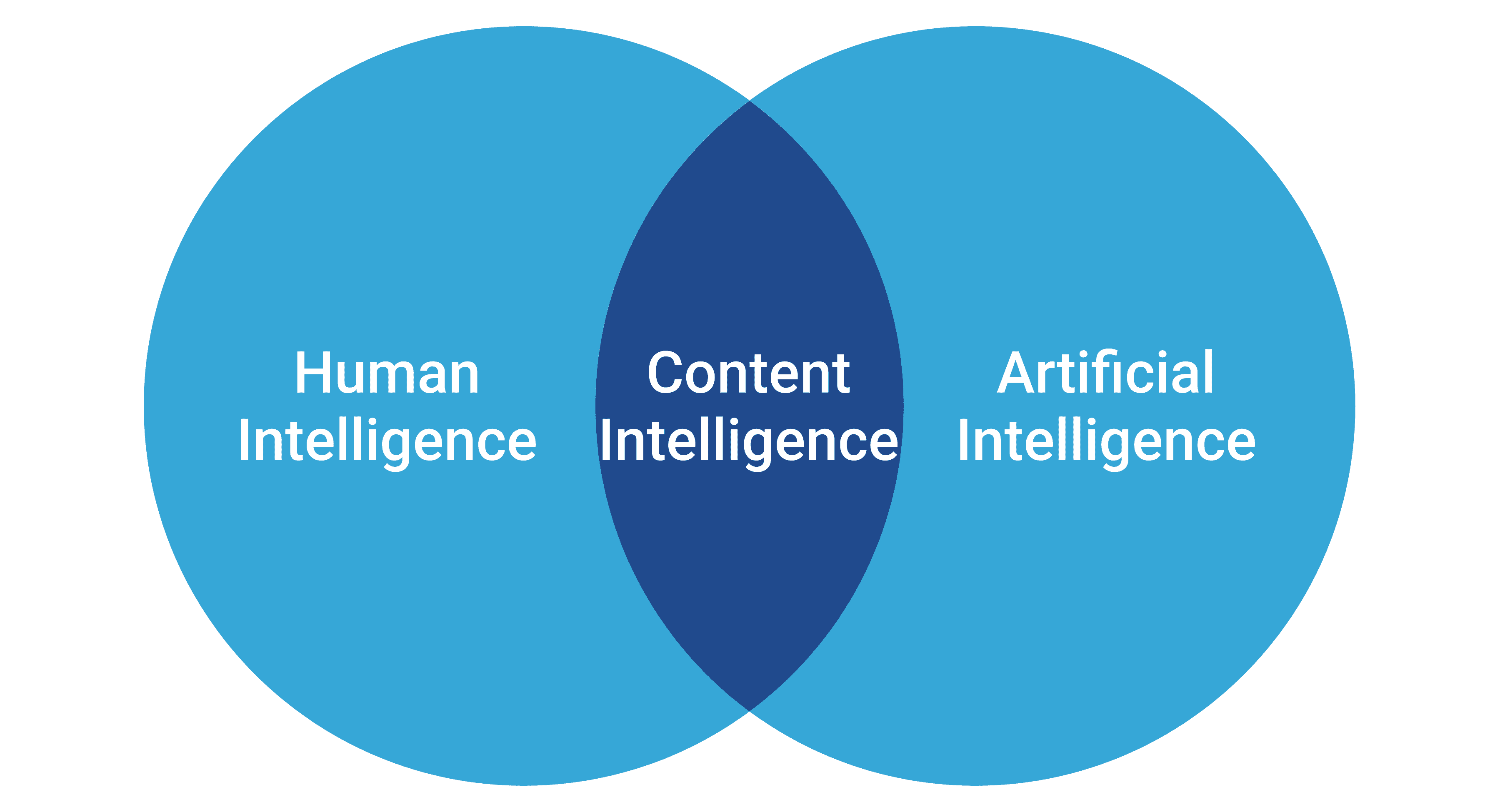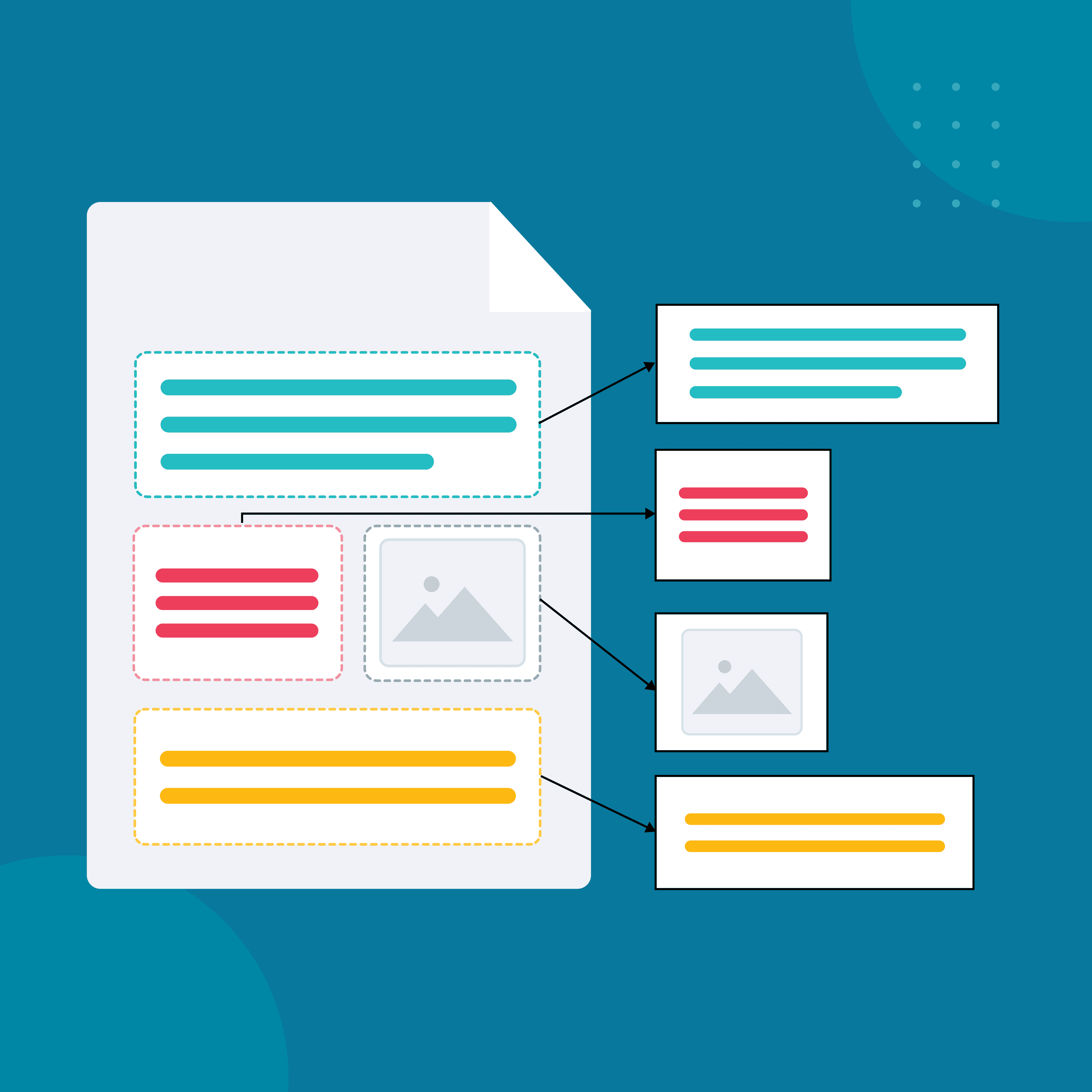The need for intelligent content is becoming increasingly important in a world where information overload is the norm.
Creating content that works harder for you is the goal of intelligent content. It's more than just content; it’s about making content structured, adaptable, and reusable. Whether you’re publishing across multiple platforms or scaling for global audiences, intelligent content allows you to deliver the right message, in the right content format, at the right time—without having to rewrite or reformat content for each platform.
We have used the linear writing paradigm for creating long-form content to create intelligent content. Content started at point A, drove through points b-y, and eventually landed on Point Z. To understand the material, the reader had to follow the outline. When the digital transformation of said content occurred, we were able to easily search through the content and jump to specific pieces of information. However, this is still a hit-and-miss affair today.
So, what did we do to improve on that? We initiated the creation and delivery of Intelligent Content.

Intelligent content is about providing personalized content to the right person, at the right time, in the right place/context. Writing methods and standards like Information Mapping and the Darwin Information Typing Architecture (DITA) have helped with the creation and management of contextualized information that can be targeted at the right level. So, an advanced field engineer will receive a different set of procedures from the rookie engineer. Content delivery platforms have since used the additional information, metadata, to help deliver that content efficiently and effectively and to enhance user interaction and participation.
The AI revolution is now having an added impact on how an organization creates content and how users can consume that content, driving operational efficiency and scalability.
With intelligent content, you can focus less on managing the chaos and more on delivering the value your users need.
Content Built for Adaptability
When I talk about intelligent content, what I really mean is content that’s designed from the ground up to be flexible. Think of it as modular—each piece can be tagged with metadata, making it searchable, reusable, and adaptable. Want the same content to show up in a manual, a chatbot, and a customer support article? Easy. Once structured and tagged appropriately, it’s ready to be repurposed, customized, and deployed across channels without recreating the wheel, ideally while using a robust technical writing software. The adaptability of this approach significantly enhances the digital experience for users by ensuring consistent and relevant content delivery across various platforms. Furthermore, this flexibility leads to improved content performance as it can be optimized for different contexts without additional resources. Learn how to improve your content development process with our comprehensive guide.
Frameworks like DITA play a big role here. With semantic tags applied during content creation, the content is separated from its presentation. So, you’re no longer worrying about formatting while writing. Your publishing engine applies the necessary format based on where the content is headed—be it web, PDF, mobile app, or whatever else you need, all streamlined by using DITA technical writing software.

Structured Content: The Backbone of Intelligent Content
At the heart of intelligent content is structure. Unlike traditional content stuck in rigid formats, structured content is fluid. Each part of a document is treated as a separate component, meaning it can be pulled apart, rearranged, or combined with other content. Think of it like Lego blocks—intelligent content gives you that flexibility. This approach isn't just convenient, it's efficient.
With structured content, you can reuse pieces across different documents or platforms without risking inconsistency. Structured content systems give you that flexibility by enabling semantic tagging that tells the system what each piece of content is (header, body text, task) what it applies to (product, version, role) —and how it fits into the larger picture. You’re never stuck adjusting the same content in multiple places again.
Metadata: The Real Power Behind Intelligent Content
Metadata is like the secret sauce of intelligent content. With the right metadata, your content becomes highly searchable and adaptable. Metadata acts as a blueprint, giving both humans and machines the instructions needed to find, deliver, and format that content. This is how intelligent content achieves personalization—it’s dynamically adjusted based on tags like location, device, or audience preference.
From an engineering or manufacturing perspective, metadata enables the customization of content based on specific operational requirements, such as adjusting information for different production facilities or equipment configurations. This targeted approach ensures that the right technical documentation or process guidelines are delivered to the appropriate team or external system, streamlining workflows and improving efficiency. Customization becomes an integral part of the content creation and delivery process, ensuring that operational data remains accurate and relevant.
Efficiency and Omnichannel Delivery
One of the biggest wins with intelligent content is omnichannel delivery, to provide a seamless and effortless, high-quality customer experience that occurs within and between contact channels. You can publish content from a single source to multiple platforms while keeping it consistent across the board. Whether it's a mobile app, a web portal, chatbot, PowerPoint presentations, or even a printed PDF, intelligent content helps ensure that what you publish is accurate and on-brand everywhere.
With centralized “component”, content management systems (CMS or CCMS), updates made to your source content flow through to all the relevant and connected platforms, facilitated by a CCMS for technical documentation. This prevents content silos, minimizes errors, and eliminates the need for manual rework. The outcome? Faster time to market, fewer headaches, bulletproof compliance and streamlined workflows.
Automation: Boosting Your Content Operations
The benefits of automation in intelligent content workflows, especially in large organizations, cannot be understated. Automation has drastically reduced the manual effort involved, minimizing mistakes and speeding up delivery times. The result? A faster time-to-market, without the last-minute stress of making everything perfect.
What’s made a big difference are AI tools that go beyond just basic automation. They identify duplicate content, automatically apply formatting based on templates, and ensure style guides are followed consistently—no second-guessing required. Even translating content for global audiences can be streamlined with AI content management, saving time and reducing the back-and-forth that can slow things down.
The real win is how automation frees up time to focus on what truly matters. Instead of getting caught up in repetitive, low-value tasks, teams can concentrate on improving the quality of content, refining strategies, and exploring ways to improve workflows. It’s not just about saving time—it’s about unlocking more opportunities to make a real impact and keep things moving forward in a meaningful way.
Why Intelligent Content is a Business Imperative
Adopting intelligent content isn’t just a technical upgrade; it’s a smart business decision. I’ve seen firsthand how it delivers tangible benefits—efficiency, scalability, and, most importantly, consistency. By implementing intelligent content, businesses can streamline operations, cut costs, and make better use of their content assets through reuse. But perhaps what stands out the most is the ability to pivot quickly. When market demands shift or customer expectations evolve, being able to adjust your content swiftly without a complete overhaul is a massive advantage.
For customers, intelligent content is about more than just efficiency. It’s about delivering the right information at the right time, in a way that’s accessible and user-friendly. Whether they’re interacting with a chatbot, reading a support article, or navigating your mobile app, customers expect to find the information they need without digging for it. Intelligent content ensures that their journey to the right information is smooth and intuitive, reducing friction along the way. This not only saves time for them but also leads to a more positive overall experience with your brand.
Intelligent content plays a crucial role in business, especially where customer satisfaction can make or break loyalty. It gives companies the flexibility to tailor content to the needs of different audiences, so whether someone is a first-time user or a returning customer, they’re getting relevant information quickly. When customers can easily access the resources they need, they feel more confident in your product or service—and that translates into stronger trust in your brand.
The beauty of intelligent content is that it doesn’t just solve today’s challenges—it prepares you for the future. As technology advances and customer behaviors change, having content that’s flexible, scalable, and easily adaptable keeps your business ahead of the curve. From speeding up your internal processes to improving the customer experience, the impact of intelligent content touches every corner of your operation. And that’s why, in my view, it’s not just a business imperative—it’s a competitive necessity.

The Future is Intelligent
It’s not just artificial, even though that’s where the buzz is right now. I’ve found that the real game changer is the combination of human intelligence and artificial intelligence—that’s where content intelligence comes into play. The content landscape is shifting, and intelligent content is leading that transformation. It’s no longer something that’s nice to have—it’s now essential for any business that’s serious about scaling operations, boosting efficiency, and delivering consistent, high-quality content across multiple platforms.
From my experience, businesses that aren’t embracing intelligent content are going to be left behind. The old ways of managing content just won’t cut it anymore. With so many touchpoints—apps, websites, chatbots, support portals—you need a system that can seamlessly adapt to every format, every channel, and every audience. And that’s what intelligent content delivers. It’s flexible, it’s scalable, and, most importantly, it can evolve alongside your business and your customer needs.
If intelligent content isn’t already a part of your strategy, it’s time to take a step back and reconsider how you’re approaching content creation, management, and delivery. The tools and processes that worked even a few years ago are starting to show their limitations. You need content that can not only meet today’s demands but also prepare you for tomorrow’s challenges.
For me, it’s about more than just keeping up with trends—it’s about future-proofing the way content is handled. As AI continues to evolve, the synergy between human creativity and artificial intelligence will drive even more innovation. But at the end of the day, it’s still about creating content that resonates with real people. Intelligent content helps bridge that gap, using the power of technology to support the human element that’s at the heart of every successful business interaction.
Looking ahead, businesses that invest in intelligent content today will have the agility and foresight to thrive in a constantly changing environment. It’s not just about staying competitive—it’s about leading the way forward.
Watch episode 3 of our AI series for more on Content Intelligence: Preparing for AI in Content Development and Management – Content Intelligence with Anthony Olivier and Jim Waschbusch.










